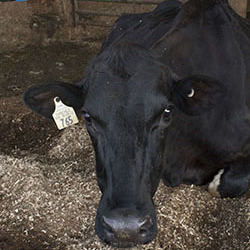 The transition period is fittingly named, as a dairy cow goes through a flood of transitions the 60 days precalving to 30 days postcalving.
The transition period is fittingly named, as a dairy cow goes through a flood of transitions the 60 days precalving to 30 days postcalving.This time period can be one of pride or one of frustration, as it has the potential to make or break a whole lactation. To evaluate fresh cow programs on dairy farms, Iowa State University Extension and Outreach conducted a transition cow survey. A total of 25 dairy farmers responded with an average herd size of 395 milking cows and 60 dry cows. Rolling herd averages ranged from 20,000 to more than 28,000 pounds of milk.
The farms were asked to share their greatest challenges in terms of transition cows. The four areas that provided the most challenges included nutrition, metabolic and other diseases, employee management, and facilities.
Despite these potential roadblocks, 42 percent of the producers categorized their transition cow management as excellent. Some of the same areas that can be considered challenges also lead to great success when everything is going right. Areas that helped these farms achieve positive fresh cow results included:
- Nutrition, including quality feed, low-potassium hay, high-forage rations, consistent feeding, free-choice dry hay at freshening, and good body condition score.
- Facilities, including smaller groups and a location closer to the parlor, reducing overcrowding, fresh and clean bedding, facilities that allow for cow comfort and observation, less pen moves, and flexibility of barn for group sizes.
- Herd health, including calving ease, timely vaccinations, postfresh monitors, and administering calcium boluses.
- Employee management, including good care of fresh cows and an excellent herdsperson.
These changes varied in cost. For the facility changes, investments ranged from $10,000 to $200,000.
The farms also had some items on their wish lists to further improve transition cow care. New facilities that would provide more space per cow with the addition of stalls or bedded pack areas and enhanced ventilation were common responses. Some farms wanted to improve herd management by installing an activity monitoring system or cameras in the calving barn or by hiring full-time employees to care for transition cows. Other farms wanted to be able to separate first-calf heifers from mature cows.

The author is an associate editor and covers animal health, dairy housing and equipment, and nutrient management. She grew up on a dairy farm near Plymouth, Wis., and previously served as a University of Wisconsin agricultural extension agent. She received a master's degree from North Carolina State University and a bachelor's from University of Wisconsin-Madison.








